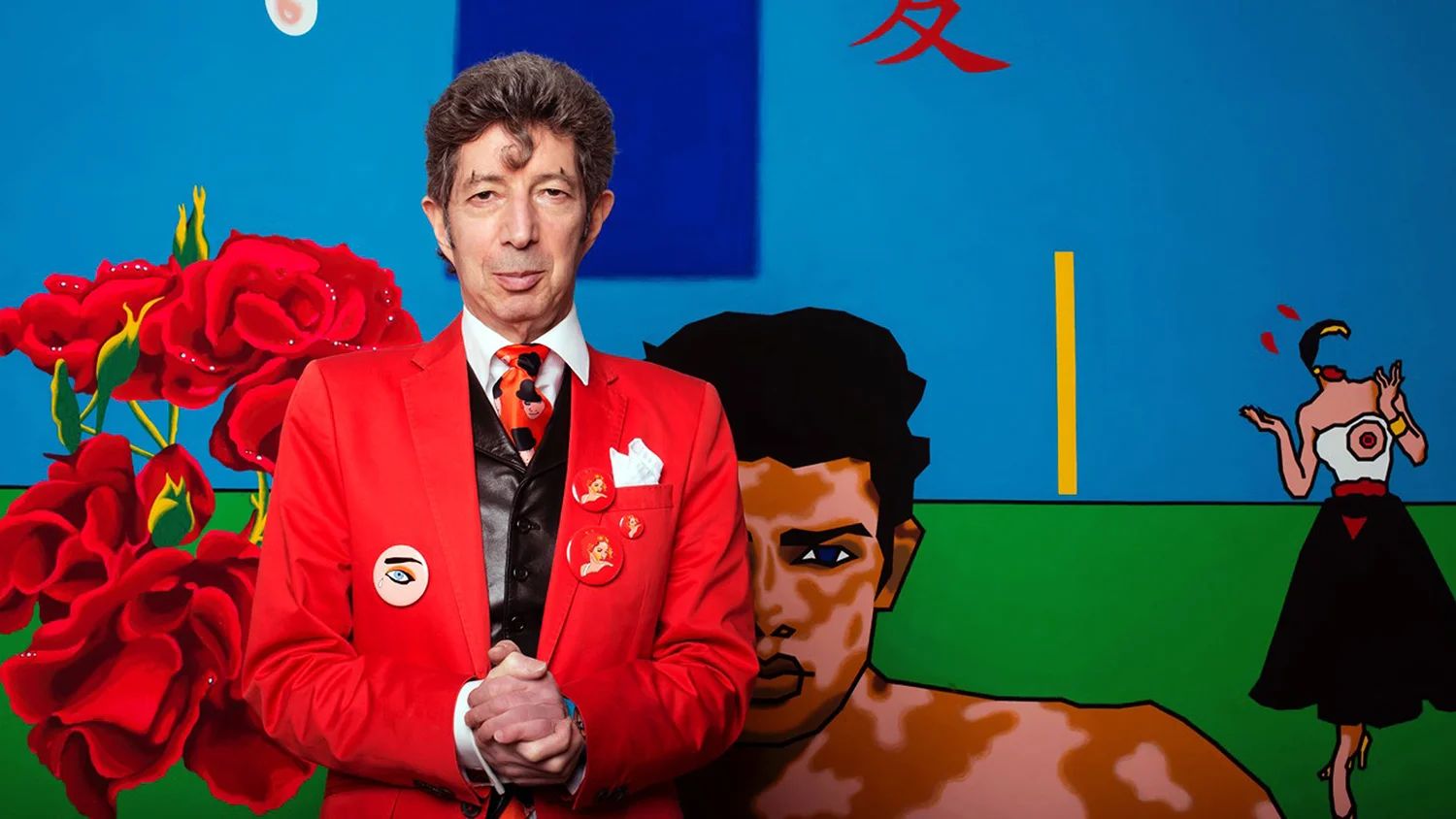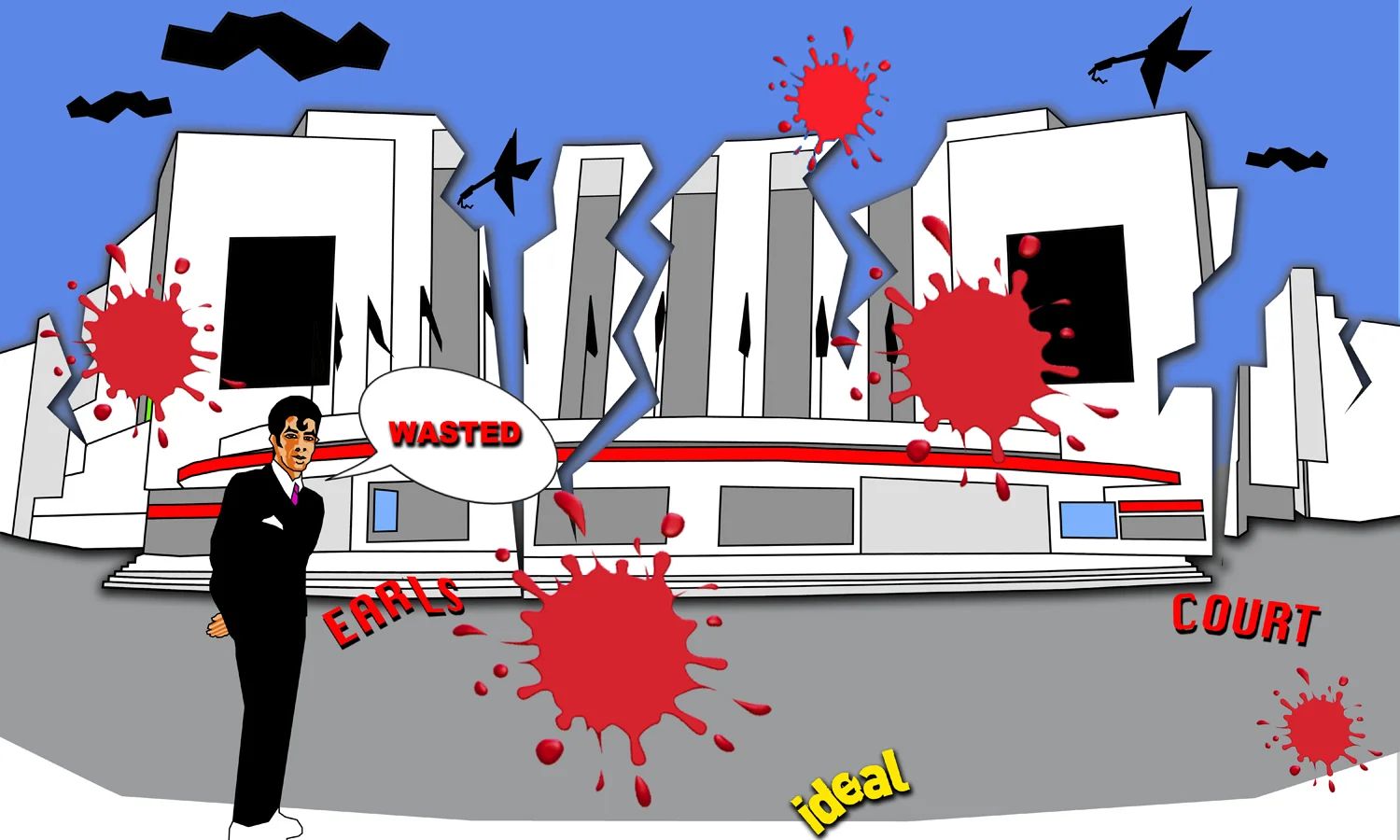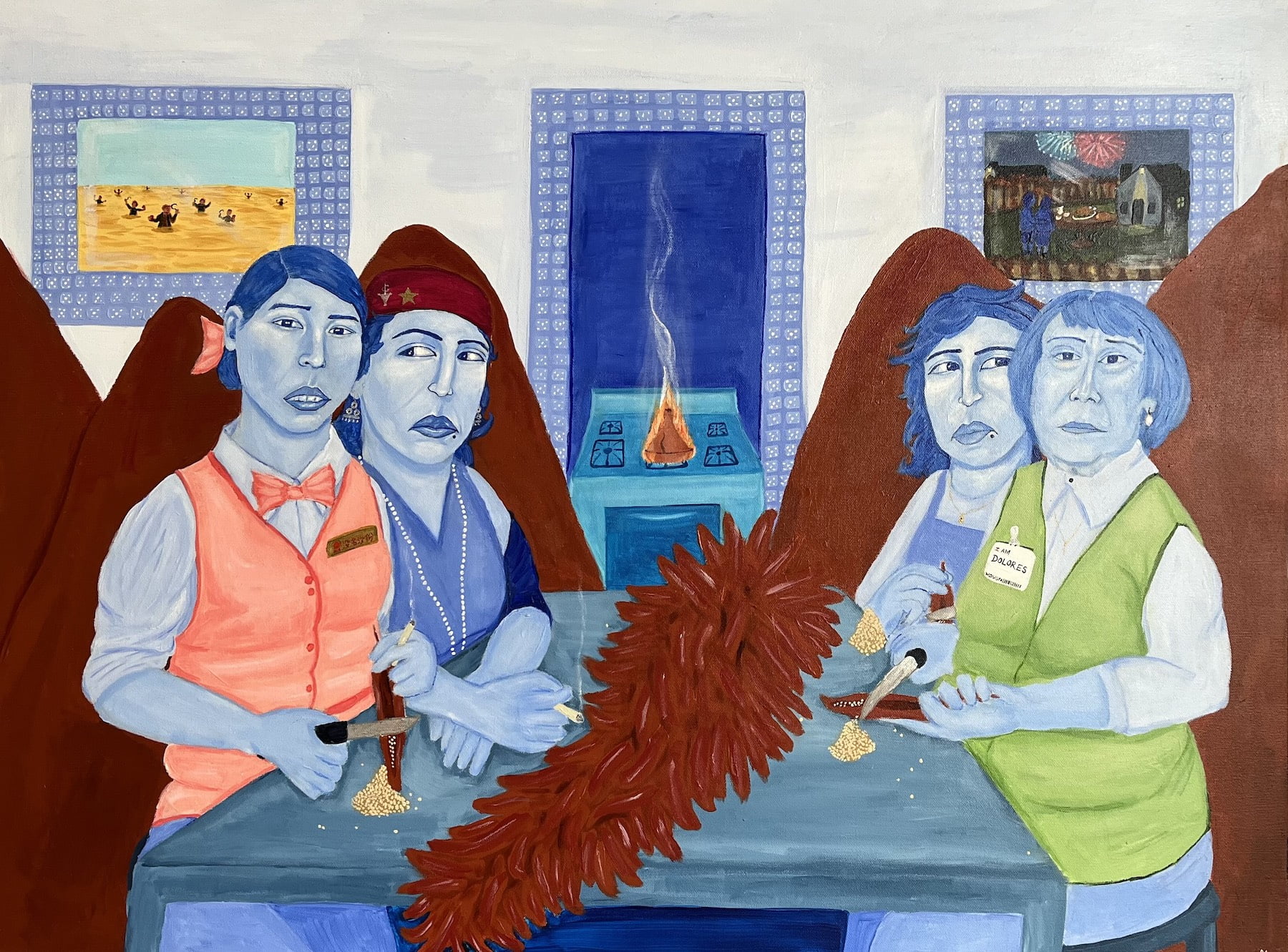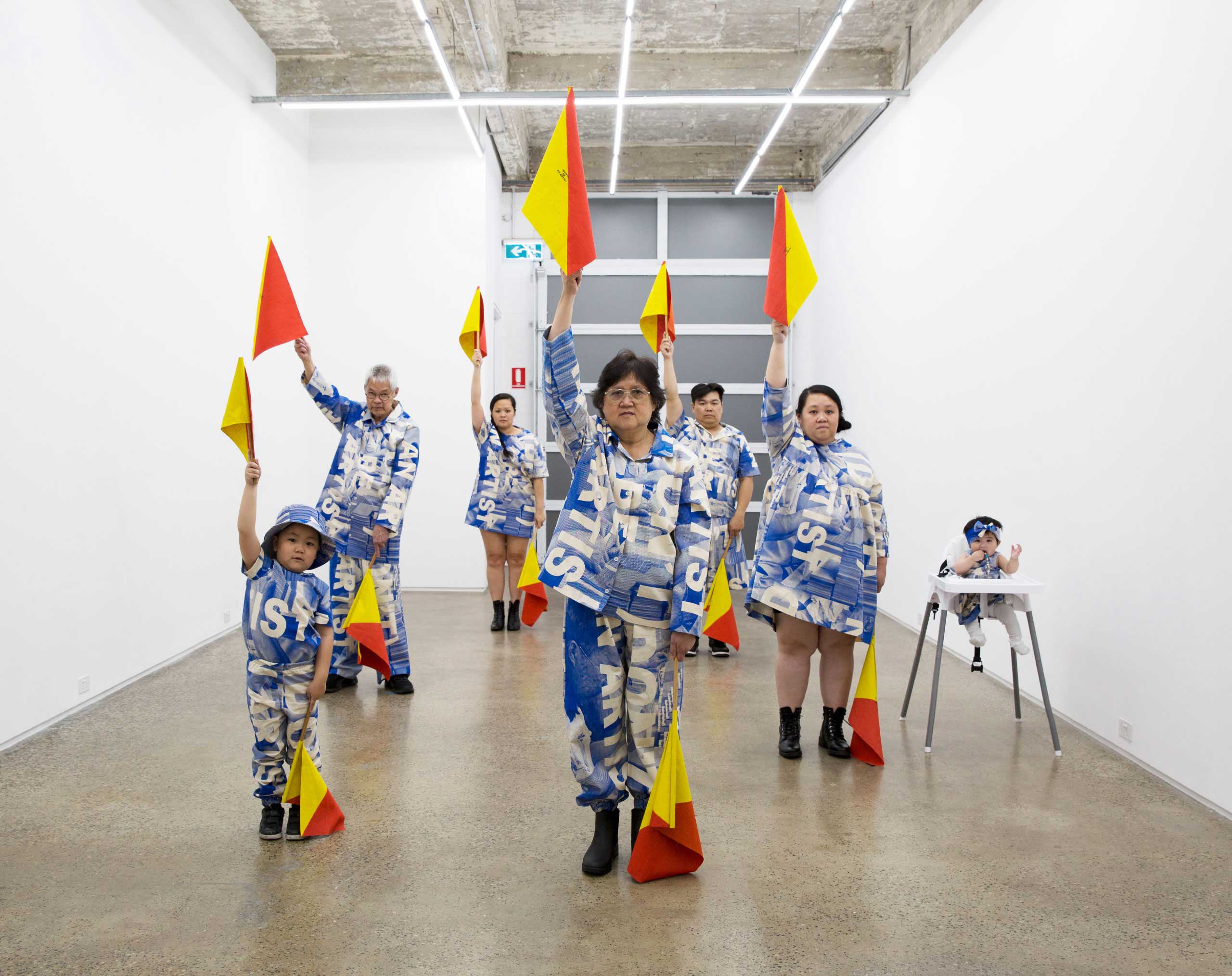
Duggie Fields
1883 is deeply saddened to announce British painter and all-round creative mind Duggie Fields has passed aged 75.
With a career spanning fifty years, Duggie Fields was a true British institution.
In September 2019, 1883 Arts Editor met the post-pop constructivist artist, as he liked to call himself, to talk art, fashion, and how he had become a household name in Japan in the 80s
A post-modernist whirlwind of pop culture references where lowbrow and highbrow collide and mingle, the art of Duggie Fields (1945 – 7 March 2021) is no less than encyclopedic, inherently reminiscent, and yet unquestionably inventive and original. In his works, where the occasional beheaded Marilyn stands next to British royalties and comic book characters against Mondrianesque coloured patterns and trippy London skylines, art history and the everyday are evenly revered.
Citing Jackson Pollock and Stan Lee among his main influences, Fields drew from classical and popular culture, borrowing from the past to shape a new imaginary. A tireless experimenter – besides painting, his interests encompassed animation, film and music – Duggie Fields came to define an aesthetic where creating, reworking and repurposing are equally as important. Witty, vivid, sometimes provocative, and featuring a comic-like style marked by black, sharp-edged outlines, his paintings and digital artworks are quintessentially post-Pop, exuding a feeling of déjà vu, a sense of familiarity that amplifies their intrinsic newness.
A native of Tidworth, Wiltshire, Fields lived in Earls Court, London, from 1968 until his death in March, 2021, in a house-cum-studio decorated to reflect his unique taste; his art has been the subject of numerous group and solo exhibitions in Europe, Asia, Australia and the US.
In September 2019, Duggie Fields agreed to an interviewed with 1883 Magazine.

Your name has been associated with such art movements as maximalism, conceptualism, post-modernism, pop art and post pop; we don’t want to put a label on you of course, but if you had to choose one, which of the above do you feel better describes your work at present?
I found myself recently saying I was a constructivist; I kind of like that. I could amend it a bit to post-pop constructivist, which maybe gives it a conceptual time-frame.
You studied architecture before enrolling at Chelsea School of Art; would you say this has somewhat informed the way you make art?
Always. I loved the paraphernalia of technical drawing. Set square, t-square, graph paper, etcetera. As a schoolboy I’d been good at, and enjoyed, geometry. So as well as using brush and paint at Art School – and for years before – I gradually evolved a process of making studies beforehand using tracing paper layers over graph-paper with a ruler.
You took a photography course during your time in college. I can see from your Instagram account you have quite an impressive archive; is taking pictures something you enjoy doing on a regular basis?
At college I enjoyed most the processes of the dark-room, manipulating and playing with the image, which made me the target of criticism from the tutor for not being truthful to the lens. Taking photos didn’t really become such a feature of my life until the phone in my pocket developed into a camera as well. I can’t really imagine life without it now, I use its camera every day, automatically – it is so different from when one had to think about film, and processing, how few shots there were on a roll of film, and not being able to see the result instantly.

You relocated from Tidworth to London in the early 60s, in a time where the city was literally overflowing with creativity. As a long-time resident of Earls Court, how has the city changed over time creativity-wise?
My journey was from a small village, to a small town, to the outer suburbs. As a child I’d always come to London to visit relatives. Somehow I always knew I’d live here.
There was a post-war baby bulge of young people all coming to the City at the same time which I was part of. Around then, there was an explosion of new creativity and international attention on London which there hadn’t been before. It was also the start of the mass tourism that we take for granted now particularly from America and Europe; then it was very rare to hear a foreign language in the London streets or see a coloured face. At the same time as this creative influx happened there was – or perhaps appeared to be – a breakdown in both class and race barriers.
In retrospect, the world I moved in which at the time felt special and yet ordinary to me – but very cool – was really quite small, exclusive, and elitist. It was based on talent and education, as well as look; it encouraged an individualism that defied conformity, and everything revolved around what we were making ourselves, or attempting to.
Does in your view London still provide a fertile ground for artists to thrive?
London has kind of had its centre somewhat obliterated in recent years by the mass of people that have descended on the City in search of its now mythological magic, thus transforming it in the process. Perhaps now it’s harder to perceive an indigenous youth culture, but perhaps that concept itself belongs to a pre-internet, pre-social media past. As much as I bemoan the loss of many places, venues, buildings that I loved, it’s still a unique intoxicating environment, in parts so gorgeous and in other areas so deeply shocking, but a great place to have the privilege to live in the fullest sense of that word.
Out of curiosity, what drew you to Earls Court in the first place?
My flat in Earls Court was really a chance find, on the edge of where I wanted to be and somewhere I never expected to spend the major part of my life. But I’ve never forgotten the advice when I first came to London from a very glamorous successful fashion designer friend and supporter, slightly older, beautiful and really bonkers, saying to me that the only place to live in life was on the edge. She meant in every sense – not particularly geographical – as there one would have the most potential. So it could really have been anywhere, and then not as it has turned out to be a great base to have lived in for so long.

What are your favourite places and hangouts in the area?
All my old favourite places have gone. I don’t really have new ones. Like so much of London, the area is dominated now by chains. There’s nothing special to come here for. No hangouts, but not that it was an area ever of many. Always a place to travel from rather than to, except for the Exhibition Centres so recently demolished leaving a great cultural void where they stood.
The only thing to come to the area for, apart from some great period architecture and homes, and tree-lined streets, is the graveyard.
A Victorian masterpiece, it recently become a Royal Park with a new cafe. It’s the place I walk in most, and bring friends and acquaintances to marvel at its wildness in spring and early summer in a way unique to such a central area of any capital City.
You have quite a strong social media presence; what is it like being a non-native-digital artist in the Social Media Age?
I got my first computer in the mid 90s. There was no social media then and the internet had only just started getting domesticated. I wrote a piece about The Global Downtown and the Web of Perception even before we all had access to any network as a response to my own experiences if visiting New York, Paris and Tokyo where currents of communication were already spreading through the print media boom of the 70s and 80s.
It was seductive to be able to place one’s own images and stories online in websites and networks that started appearing without someone else’s intervention. It became a part of finishing a work and then a place to make work almost seamlessly.
Now I place works on digital networks as part of my process of making anything. I also source random images and sounds that influence and become part of new works. I don’t think of my ‘position’ in these spheres. They have just evolved into an everyday part of my self, and my work.
As you were saying, you have been making digital art since the 90s; how did it start?
When I got my first screen, I though I would just archive my past and continue making collages without cutting up more things to make them. However once I started, I found the transparencies I had made with brush and paint, once scanned, didn’t look as good as I hoped. I started trying to improve how they looked and discovered how computer softwares could produce layers over a grid and the mouse produced the straight lines I was making with a ruler. It just became another useful tool, which opened this unexpected vast virtual space.
The first collage I worked on turned into a drawing and a portrait. Then, when printed out, it became the study for a large canvas that set a precedent for a new way of working for me. From there, once I started learning one software I started exploring others, having already been working in film and music alongside painting for many years beforehand. I had my first tape-recorder at 13 in the 50s and film camera in the 70s.
You have a very distinctive sense of fashion and your work has inspired such designers as Rei Kawakubo of Comme des Garçons; are there any other collaborations in the pipeline?
No new collaborations in the known pipeline at the moment, but I had to turn down one recently over timings that I would have loved to have done, but couldn’t. So it could be a future possibility rather than a lost opportunity at the moment. It is always great being asked even if one has to say no.
In the 80s, you became a cultural sensation in Japan. I am sure you have been asked this question before, but can you tell us how this unfolded?
Japan started to come into my life in the late 70s, early 80s, first in magazine features, then in offers of exhibitions and events that frequently faded into nothing, before Shiseido happened out-of-the-blue in the biggest way I couldn’t conceive of (Shiseido Company, Limited is a Japanese multinational company; in 1983 opened a gallery in Tokyo to present a solo exhibition of Fields’ work, ed.). Then it was over pretty much for the next 20 years, until Comme des Garçons happened.
And finally, what do you have lined up for the near future?
For the future… The Modern Institute will be showing my last canvas at Frieze in London in October. There will be more film pieces going online whenever, possibly a gallery installation of them. Very new for me, and just something suggested recently, is to perform a 30 minute live set in Paris in the spring. I’m giving it thought. It’s a big out-of-my-comfort-zone challenge. Last December though, I made the briefest walk-on appearance opening someone else’s concert there at Olympia, something I never expected or thought I would do. So now I think I will say yes… I just have to learn what to do! A big maybe as simultaneously I want to get back to the studio and paint.
Words and interview by Jacopo Nuvolari





